RFID Journal LIVE! 2023 will feature end-user companies discussing RFID’s use in various industries, as well as exhibitors offering tagging solutions for multiple applications. To learn more, visit the event’s website.
Presented here are recent news announcements in the radio frequency identification and Internet of Things industries.
STAR Systems, TransCore Partner on Tolling Solutions
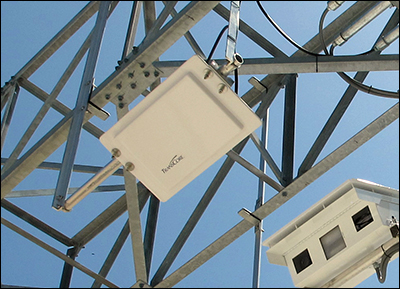 Star Systems International has signed a mutual collaboration agreement with TransCore, a provider of tolling and intelligent transportations systems, to develop, promote and sell readers, antennas and transponders for multi-protocol and interoperable tolling systems. This collaborative effort, the companies report, is intended to improve performance and reliability in open-road tolling, congestion pricing, and express and managed lanes systems.
Star Systems International has signed a mutual collaboration agreement with TransCore, a provider of tolling and intelligent transportations systems, to develop, promote and sell readers, antennas and transponders for multi-protocol and interoperable tolling systems. This collaborative effort, the companies report, is intended to improve performance and reliability in open-road tolling, congestion pricing, and express and managed lanes systems.
“TransCore has always been an innovative leader in electronic tolling, intelligent transportation systems, radio frequency identification and revenue transaction management,” said Robert Karr, STAR Systems International’s CEO, in a prepared statement. “We are very pleased to have the opportunity to further work with this world leader to develop our next-generation reader and transponder products.”
“TransCore’s Infinity Digital Lane Systems offer the marketplace advanced, proven and readily deployable toll-collection solutions,” added Whitt Hall, TransCore’s COO, in the statement. “Developing next-generation reader and transponder products with STAR Systems International’s technology will allow TransCore to continue to raise the bar of performance and customer service in intelligent transportation systems.”
Semtech, Connected Development Launch LoRa IoT Products
Semtech, a provider of semiconductors, Internet of Things (IoT) systems and cloud-based connectivity services, in partnership with engineering design services firm Connected Development, has announced the XCVR Development Board and Reference Design, with an integrated LoRa sub-GHz radio transceiver. Based on Semtech’s LoRa SX126x series, the Development Board and Reference Design is intended to simplify the design process, the companies explain, for customers designing solutions for building management, agriculture, supply chain, logistics and industrial control.
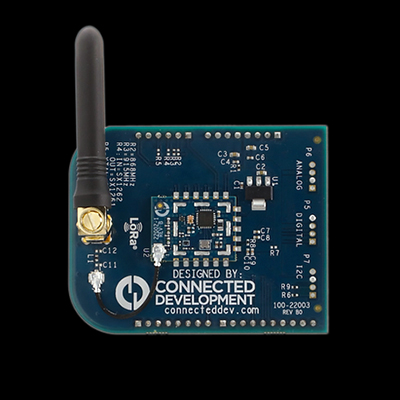 Connected Development’s layout and schematic files for the XCVR board provide customers with LoRa implementation into end-product designs. Software drivers are supplied with the design, compatible with systems from various microcontroller (MCU) vendors, including Nordic Semiconductor. The software examples include LoRa Point to Point and LoRaWAN (LoRaMAC-Node and LoRa Basics Modem) reference firmware to enable rapid software development. The XCVR with the SX126x transceiver is available exclusively at Mouser Electronics and Symmetry Electronics.
Connected Development’s layout and schematic files for the XCVR board provide customers with LoRa implementation into end-product designs. Software drivers are supplied with the design, compatible with systems from various microcontroller (MCU) vendors, including Nordic Semiconductor. The software examples include LoRa Point to Point and LoRaWAN (LoRaMAC-Node and LoRa Basics Modem) reference firmware to enable rapid software development. The XCVR with the SX126x transceiver is available exclusively at Mouser Electronics and Symmetry Electronics.
“LoRa continues to be seen as the de facto wireless platform for IoT,” said Robert Comanescu, the senior director of Semtech’s IoT Chips Business, in a prepared statement. “Semtech’s LoRa chipsets connect sensors to the cloud and enable real-time communication of data and analytics that can be utilized to enhance efficiency and productivity. With the XCVR’s small form factor, production-ready hardware design, firmware and dedicated support resources available through Symmetry Electronics, Mouser and Connected Development, we believe this platform will be ideal for customers currently developing LoRa-enabled wireless designs or considering a future wireless product on their roadmap.”
Gregor Bleimann, Connected Development’s VP and general manager, added in the statement, “The collaborative effort between Connected Development and Semtech on the XCVR provides our customer base with the combined benefits of Semtech’s next-generation technology and Connected Development’s state-of-the-art engineering design. We are confident that implementing Semtech’s SX126x into the XCVR Development Board and Reference Design enhances functionality, product design, and furthers our wireless solutions. Customers will decrease their time-to-market with added confidence by leveraging this reference design for their products.”
Texas Instruments Offers IC Family for IoT Applications
Texas Instruments (TI) has introduced a new SimpleLink family of Wi-Fi 6 companion integrated circuits. The ICs are intended to help designers implement reliable, secure and efficient Wi-Fi connections for applications that operate in high-density or high-temperature environments at up to 105 degrees Celsius. The first products in TI’s new CC33xx family include devices for Wi-Fi 6 only, or for Wi-Fi 6 and Bluetooth Low Energy (BLE) 5.3 connectivity in a single IC.
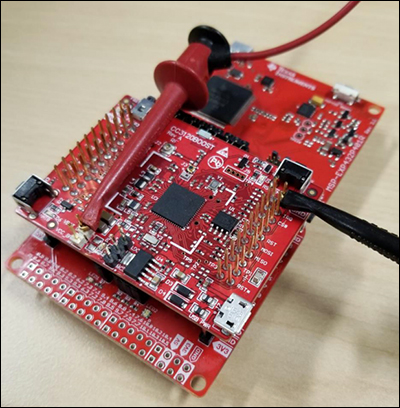 When attached to an MCU or processor, TI explains, the CC33xx devices enable a secure IoT connection with reliable RF performance in broad industrial markets, such as grid infrastructure, medical and building automation. The CC3300 Wi-Fi 6 companion IC and CC3301 Wi-Fi 6 and BLE 5.3 companion IC are priced at $1.60 apiece. The 2.4 GHz devices provide Wi-Fi network efficiency and a stable connection across more than 230 access points, the company notes, while operating at temperatures ranging from -40 degrees to +105 degrees Celsius. The devices allow designers to connect IoT edge nodes directly to home or enterprise access points without additional equipment.
When attached to an MCU or processor, TI explains, the CC33xx devices enable a secure IoT connection with reliable RF performance in broad industrial markets, such as grid infrastructure, medical and building automation. The CC3300 Wi-Fi 6 companion IC and CC3301 Wi-Fi 6 and BLE 5.3 companion IC are priced at $1.60 apiece. The 2.4 GHz devices provide Wi-Fi network efficiency and a stable connection across more than 230 access points, the company notes, while operating at temperatures ranging from -40 degrees to +105 degrees Celsius. The devices allow designers to connect IoT edge nodes directly to home or enterprise access points without additional equipment.
“The adoption of Wi-Fi 6 and Wi-Fi 6E is accelerating, with 2.5 billion Wi-Fi 6 devices expected to ship worldwide in 2023,” said Kevin Robinson, the Wi-Fi Alliance‘s CEO, in a prepared statement. “Today’s Wi-Fi is well suited to address a variety of industrial IoT applications, and innovation from companies like Texas Instruments is helping expand the number of applications, such as electric vehicle charging systems, smart meters and smart appliances, that can rely on Wi-Fi to deliver reliable, consistent, and efficient connectivity in the IoT market.”
According to TI, the Wi-Fi 6 companion devices feature orthogonal frequency division multiple access (OFDMA) technology and basic service set (BSS) coloring to deliver fast and consistent network performance and connect more devices simultaneously, without interference from congestion. The devices support Wi-Fi Protected Access security features, including the latest WPA3 cryptographic technologies for personal and enterprise networks, and a secure-boot feature with firmware authentication.
The CC3300 and CC3301 Wi-Fi 6 ICs can be attached to TI’s and other companies’ MCUs and processors that support Linux or real-time operating systems. For example, CC33xx products can be attached to artificial intelligence-capable processors like TI’s AM62A Arm Cortex-based vision processors, used in edge AI applications like smart appliances and security cameras to reliably connect smart Wi-Fi-enabled devices to the cloud. Industrial design engineers can incorporate the CC3300 with host MCUs, such as TI’s 2.4 GHz CC2652R7 SimpleLink multiprotocol wireless MCU, or an AM243x MCU-hosted system, to enable greater IoT flexibility with the Wi-Fi 6, BLE 5.3, Thread, Zigbee 3.0 and Matter protocols.
“Adding a secure and robust wireless connection to an industrial design such an EV charging system that operates in an outdoor and potentially hard-to-reach environment is challenging and especially costly for designers,” added Marian Kost, TI’s VP and general manager of connectivity, in the statement. “Our new SimpleLink family of Wi-Fi devices makes it significantly more affordable and simpler to implement the latest Wi-Fi technologies in more places than ever before.”
Abracon UWB Antennas Enable Short-Range Data Transmission
Abracon, a provider of passive components, has announced a new line of ultra-wideband (UWB) antennas. The solutions include the company’s Ultra-Wide Band 3.3–7.2 GHz Chip Antenna, Ultra-Wide Band 3.7–4.2 GHz Chip Antenna, and Ultra-Wide Band 6.2–8.2 GHz Chip Antenna. The new antennas are designed to provide high connectivity, the company explains. Abracon says its antennas provide high efficiency and low power consumption and are built to enable fast and stable data transmission.
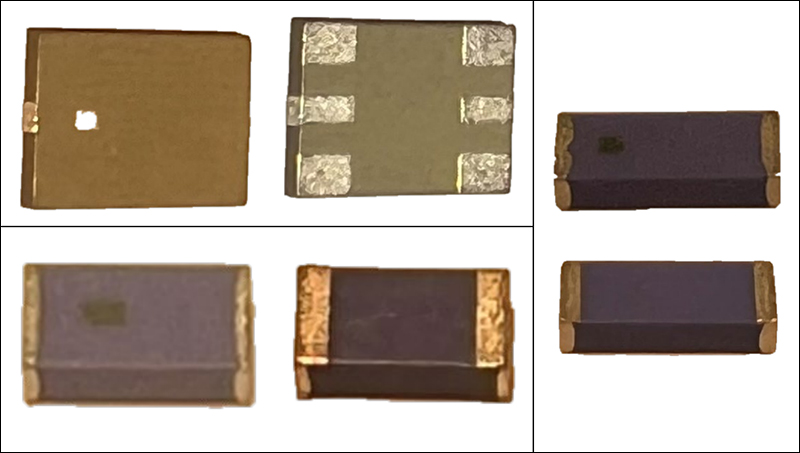
“We are excited to announce our new UWB antennas,” said Kelly Henry, Abracon’s senior product line manager for RF and antennas, in a prepared statement. “These antennas are specifically designed with low power consumption requirements that result in increased battery life. Our new solution covers a wide range of applications, including IoT, M2M, secure car access, item tracking, indoor navigation, hands-free payment, smart access and object detection.”
With this announcement, Abracon says it is expanding the capabilities of its RF and antenna portfolio. The new UWB antennas include all relative frequency bands and are intended to serve a variety of markets. The antennas, models ACG0301U, ACG0502U and ACG0806U, are available via the company’s global distribution network.
Connectivity Standards Alliance Revises Zigbee Protocol Stack
The Connectivity Standards Alliance, comprising hundreds of companies that create, maintain and deliver open global standards for the Internet of Things, has announced the release of Zigbee PRO 2023 of the Zigbee protocol stack. The revision adds enhancements and new features to the technology, allowing mesh networks to have a universal language that enables smart objects to work together. Zigbee PRO 2023 expands on secure-by-design architecture, according to the organization, by adding security enhancements to address changing market needs, while simplifying the user experience and extending supported bands beyond 2.4 GHz.
The revision enables Zigbee Direct, simplifying device onboarding and control utilizing BLE, a technology found in many voice-assistant products and mobile devices. The Zigbee PRO 2023 version progresses standardization of hub-centric operations with the first phase of the Works With All Hubs feature, intended to boost network resiliency on a hub-centric network by helping devices identify the most suitable parent for securely joining and rejoining the network. The added support for sub-gigahertz frequencies for Europe (800 MHz) and North America (900 MHz) increases signal strength and range to support additional use cases.
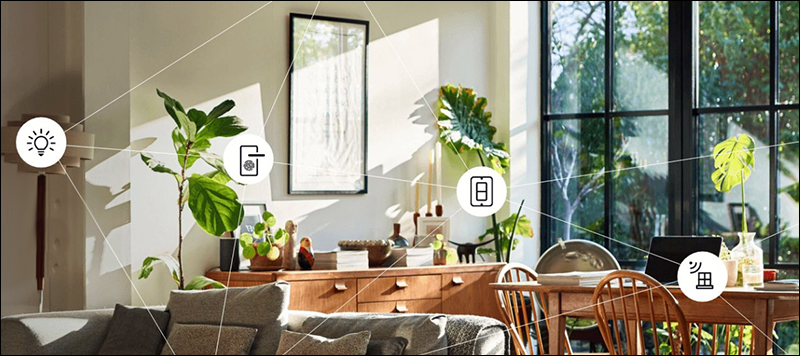
“After two decades, Zigbee continues to empower consumer and industrial use cases, enabling richer and more reliable connectivity for utilities, homes, industry, and buildings,” said Tobin Richardson, the Connectivity Standards Alliance’s president and CEO, in a prepared statement. “With PRO 2023’s new features and security enhancements, our hundreds of members continue to evolve and increase Zigbee’s relevance and value to manufacturers, their customers and consumers.”
Zigbee devices built to Zigbee PRO 2023 specifications with a sufficient level of security will be able to be on the same network as smart energy devices, providing the exchange of important information to improve control and use of the energy and devices. Zigbee-certified products can connect and communicate using the same IoT language with each other. Hundreds of millions of Zigbee products are already deployed in smart homes and buildings worldwide, with more than 3,900 Zigbee products certified, and a billion-plus chipsets sold globally.
“Security always needs to evolve as new exploits and attacks are introduced. With the PRO 2023 release, Zigbee now includes several critical security features to address modern-day threats,” added Asad Haque, the chair of the Alliance’s Security Advisory Group, in the statement. “These enhancements utilize industry-standard cryptographic algorithms and mutual authentication to protect network security during commissioning and subsequent operation. It is great to see well-established standards like Zigbee continue to adopt the latest security technology available to deliver peace of mind to consumers.”
Descartes Systems Group Acquires Localz
 Descartes Systems Group has acquired Australian company Localz‘s assets and technology platform, for which it paid approximately $US 6.2 million. The Localz platform combines real-time vehicle location tracking and communications to offer safe, transparent, customer-centric software-as-a-service solutions to improve deliveries. Customers can schedule services and deliveries through an online portal, then follow the progress of their orders in real time via built-in notifications. The platform provides an efficient click-and-collect solution for in-store collection processes.
Descartes Systems Group has acquired Australian company Localz‘s assets and technology platform, for which it paid approximately $US 6.2 million. The Localz platform combines real-time vehicle location tracking and communications to offer safe, transparent, customer-centric software-as-a-service solutions to improve deliveries. Customers can schedule services and deliveries through an online portal, then follow the progress of their orders in real time via built-in notifications. The platform provides an efficient click-and-collect solution for in-store collection processes.
“Descartes continues to invest in final-mile solutions to help our customers offer cost-efficient delivery services that transform the end customer experience,” said Ken Wood, Descartes’ executive VP of product management, in a prepared statement. “By combining with Localz, we’ve expanded our capabilities so our customers can further differentiate themselves in a highly-competitive final-mile delivery market where delivery excellence is a must-have.”
Edward J Ryan, Descartes’ CEO, added in the statement, “A great delivery experience is essential and expected by customers. End customers demand visibility and choice. Localz has a highly complementary solution to Descartes that dramatically improves the scheduling and day-of-service customer experience. We’re thrilled to welcome the Localz employees, customers and partners into the Descartes family and we look forward bringing this new technology to our wider customer base.”


